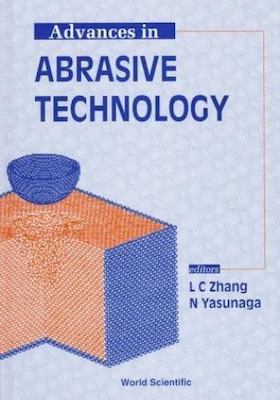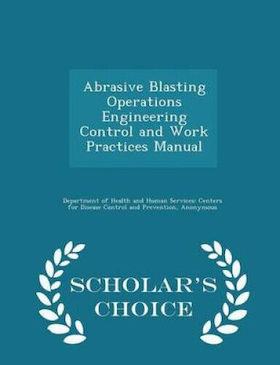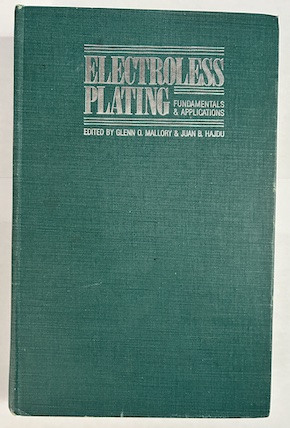
-----
Hydrogen Embrittlement vs. Electroless Nickel Plating
Q. Ted,
⇦ Tip: Readers want to learn from your situation;
so some readers skip abstract questions.
If I understand your comment correctly, one could abrasive blast a low alloy steel and then skip the cleaning and pickling steps and go straight into the EN solution (perhaps after an initial water rinse to remove any abrasive)?
If this is possible, is there data on how the resulting coating performs relative to coatings on substrates that have gone through traditional cleaning and activation?
Thank you.
Engineer - Grand Rapids, Michigan
January 28, 2025
A. Hi M.
I am not aware of any such data, but hopefully another reader will be able to offer it.
In the case of steel, proper blasting will leave a clean, oxide-free, active surface, which should accept plating very well.
Blasting is usually not an economical and highly practical production-oriented way to prepare surfaces in lieu of cleaning and acid activation. So while it can be done, and I'm confident that the surface will be sufficiently active for good adhesion, we rarely see it done -- mostly only for high strength fasteners very subject to hydrogen embrittlement, or when a bead blasted matte look is desired. Second opinions are certainly welcome!
(Musical instrument enthusiasts might be interested in thread 329/50 which illustrates nickel plating on a Resophonic guitar, in a beautiful pattern of partially bright nickel, and partially matte nickel, obtained by bead blasting the metal before nickel plating.
Please tell us what you are doing.
Luck & Regards,

Ted Mooney, P.E. RET
Striving to live Aloha
finishing.com - Pine Beach, New Jersey
Ted can be retained for immediate
answers or long term project help
A. M.,
I would say, it just really, really depends.
"Cleaning" is an overly broad term that means removing something from the surface that you don't want to be on the surface. What exactly this entails varies wildly depending on what you are removing and what you are removing it from. However, I also think it's pretty common that people who have parts that are already clean will run them through a superfluous cleaning process ahead of some other coating or treatment process, mostly because the "procedure" is to do a preclean, rather than to merely have clean parts.
Now, as far as pickling versus abrasive blasting goes, keep in mind that abrasive blasting is a form of mechanical descaling, while pickling means chemical descaling. The key word here is they are both methods of descaling. The end result is essentially the same, outside of perhaps a slightly different surface finish. The two methods differ in things like application, equipment, safety, time, etc., but not outcome.
Under the specific circumstance, I would ask what an "activation" of low alloy steel typically involves. Around here I often hear about needing to activate stainless steel before it can be plated, but as far as I know, a low alloy steel surface should be active by definition as long as there's no corrosion or scale there. In which case I agree with Ted, the difference is one of practicality more than one of outcome. However, if there is some particular surface prep needed, then abrasive blasting may not be a ready substitute.
And as always, theory is one thing, but when a question is easy to test by trying it out, then "the proof is in the pudding" as it were.

Ray Kremer
Stellar Solutions, Inc.
McHenry, Illinois
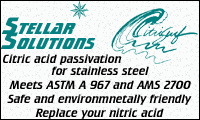
![]() Thanks for your insight Ray. One thing you addressed that I glossed over, perhaps in confusing fashion, is 'cleaning'.
Thanks for your insight Ray. One thing you addressed that I glossed over, perhaps in confusing fashion, is 'cleaning'.
Because the original topic was hydrogen embrittlement, I noted that blasting could be done in lieu of cleaning, actually meaning cleaning of a sort that can cause hydrogen embrittlement. Usually it makes sense to use some kind of mild cleaner first if the component has dirt of some sort on it. People don't want their abrasive to get dirty and greasy from the get go.
Yes, stainless steel requires a Wood's nickel strike or similar treatment because it forms an oxide layer immediately. I'm not sure of the exact definition of "low alloy steel" if it has one, but assumed we were speaking of just a few percentage points of alloying metals.
Luck & Regards,

Ted Mooney, P.E. RET
Striving to live Aloha
finishing.com - Pine Beach, New Jersey
Ted can be retained for immediate
answers or long term project help
⇩ Related postings, oldest first ⇩
Q. I am a Design Engineer in a Product Development group. I am needing to know whether hydrogen embrittlement is a concern on parts that are electroless nickel plated. A current supplier of ours claims a bake specification is not needed for electroless nickel plated parts because the process does not produce hydrogen. Is this true?
Michael Coleman- Indianapolis, Indiana
2001
A. Not totally true. EN produces less than an electrolytic nickel, but that does not produce all that much either. The real culprit is the acid etch prior to the plate. It generates a considerable amount and then plating over it traps most of it that is in the surface of the metal.
Baking is a tradeoff. The more expensive the part is to make or to replace in the field or the higher the liability for a failure is, baking is ultra extremely cheap.
The higher the hardness of the metal or the abruptness of the fillets and etc. further promote failure. So, "it depends".
James Watts- Navarre, Florida
A. Hi
H2 ions are produced during EN plating which produces porosity in the plating. The plating may also contain 6-12% phosphorus (if the plating bath is phosphite-based)which in combination with H2 could cause H2 embrittlement. (At least this is my theory anyways!)
M. Rafi- Ottawa, Ontario, Canada
A. ENP coating is amorphous in structure in the "As Coated" state. Baking would make the surface harder and, depending on the time and temperature, the structure could be transformed to crystalline. Since crystalline structure offers less corrosion resistance than the other one, this point has to be considered while baking the part. I used to work with some components used as load carrying elements. We did not carry out baking of the parts and we did not have any complaints.
Mahesh- Houston, Texas
Tip: This forum was created to build camaraderie through sharing of tips, opinions, pics & personalities.
The operator & readers who are here for that often won't engage with anonymous posters.
A. Michael,
I suggest to read the ASTM B 656-84 [Ed. note: withdrawn in 2000] and MIL-C-26074 [⇦ this spec on DLA]C. H2 embrittlement will be present always in EN coating.
Carlos Olcese- Bariloche, Argentine
A. Atomic hydrogen will be present but hydrogen embrittlement may not be. Two more conditions must be met before hydrogen embrittlement will occur: 1) the material must be a relatively high strength alloy (e.g. high strength steels or nickel based alloys like some Inconels or age hardened k-monel) and 2) it must be stressed (even just for a short time) to a significant percentage of its yield strength. If baking is needed, it doesn't have to be at a very high temperature (say, 400° F.), but the trade off for temperature is duration (don't cut it short). Sorry about the vagueness but it all depends on the alloys and the hydrogen concentrations.
Karl Erickson- Silverdale, Washington
January 22, 2008
A. Hydrogen ions are produced during the process of pretreatment as well as in EN process. To increase the hardness and corrosion resistance is the basic advantage of baking of EN plated products.
SONGIRKAR- Aurangabad, Maharashtra , India
July 19, 2009
Tip: This forum was created to build camaraderie through sharing of tips, opinions, pics & personalities.
The operator & readers who are here for that often won't engage with anonymous posters.
![]() The symbol for the element of Hydrogen is H not H2. - H2 would state that there are 2 parts of hydrogen. Have a great day!
The symbol for the element of Hydrogen is H not H2. - H2 would state that there are 2 parts of hydrogen. Have a great day!
- Rochester, New York
October 16, 2014
Q. I have got a major problem with hydrogen embrittlement after baking. After baking screws, the plating burns all over and they miss their plating. How do we solve this problem?
for Engineers, Specifiers, and Shops
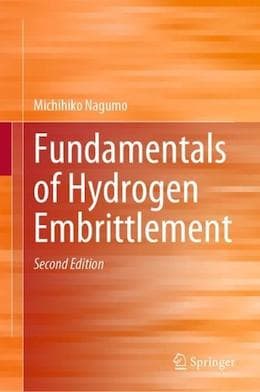
avail from eBay, AbeBooks, or Amazon
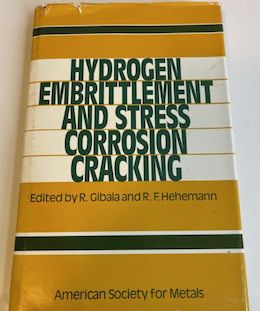
avail from eBay, AbeBooks, or Amazon
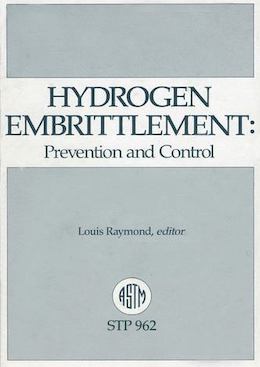
avail from eBay, AbeBooks, or Amazon
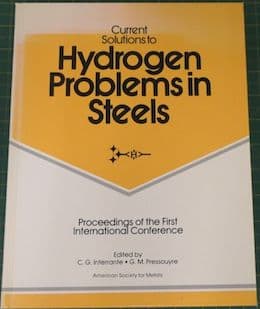
avail from Amazon
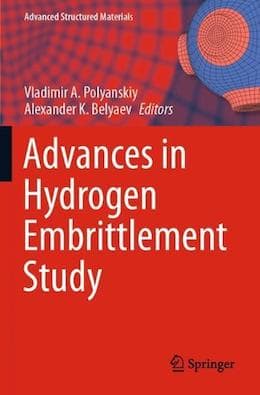
avail from eBay, AbeBooks, or Amazon
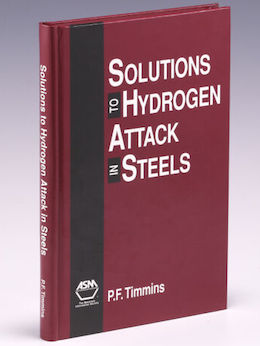
avail from eBay, AbeBooks, or Amazon
(as an Amazon Associate & eBay Partner, we earn from qualifying purchases)
- Saveh, Iran
June 25, 2012
A. Hi, Mohammad. Electroless nickel should be able able to withstand temperatures far higher than are required for hydrogen embrittlement relief baking.
It sounds like your plating is not properly done; please tell us about it.
Regards,

Ted Mooney, P.E.
Striving to live Aloha
finishing.com - Pine Beach, New Jersey
Ted can be retained for immediate
answers or long term project help
Q. Hi- I asked a question about missing plating after baking. For improving the screw from hydrogen embrittlement, we have baked them with 5 micron coating thickness. It helps the hydrogen to get out of the screw during the baking.
Right now after baking I have seen all screws electroless and it seems they haven't plated so far, then I would like to get your valued opinion on experiments for it. How do I troubleshoot?
- Saveh, Iran
Sorry Mohammad, but after 2 postings I still don't know much about your problem. Apologies, but I cannot understand whether you are saying that the screws never had any plating on them, or whether you are saying that the baking operation destroys the plating. I guess my first question is: do the screws look proper before baking? And the second question is: what temperature did you bake them at and for how long? Thanks!
Regards,

Ted Mooney, P.E.
Striving to live Aloha
finishing.com - Pine Beach, New Jersey
Ted can be retained for immediate
answers or long term project help
Q. HELLO. Could you help me please?
I've got 2 main question during my searching:
1. does the thickness of coating have an important effect on hydrogen embrittlement?
2. do the different chromates have different influence on hydrogen embrittlement?
Thank you in advance for helping
Respectfully
- Saveh, Iran
A. Hi Javad. You're moving on without acknowledging the previous posts & their requests for clarification :-(
1. Yes, it is my understanding that it can be more difficult to achieve hydrogen de-embrittlement if the coating is thicker, because the hydrogen can't as easily escape through it during baking. As an example of the recognition of this fact, Ti-Cad plating is sometimes used whereby a titanium powder is occluded into the cadmium plating to build a structure through which the hydrogen can escape.
2. When you speak of "different chromates", you may be talking about a different type of plating than electroless nickel. Please try to detail your actual situation rather than asking abstract questions because it is very easy to misunderstand and then mislead.
Regards,

Ted Mooney, P.E.
Striving to live Aloha
finishing.com - Pine Beach, New Jersey
Ted can be retained for immediate
answers or long term project help
Q. We have a 1000 mpa, 120 mm Dia. steel tube that has some internal thread features. We are looking at alternates to Electrolytic nickel plating due to non-uniform "dog boning effect" plating. Our supplier is suggesting using Electroless plating but no baking after, our concern is with Hydrogen embrittlement. Currently, no baking is performed post Electrolytic nickel plating and they want to continue the same process with electroless nickel.
Are we open to any H-E risks?
Mechanical Designer - Mississauga, Ontario, Canada
February 2, 2023
A. Hi Patanwala,
1000 mpa (145 ksi) is high strength steel. Per earlier postings on this thread, it is subject to hydrogen embrittlement, especially from anodic cleaning and acid activation ... but, yes, from the plating step as well.
Perhaps the component is blasted (which does not cause embrittlement) in lieu of electrocleaning and acid activation. In that case you need be concerned only about the plating step per se. But if the parts are non-critical and you have a history of them being okay with electrolytic nickel, they're probably okay with electroless nickel. Still, baking is probably a good idea.
Luck & Regards,

Ted Mooney, P.E. RET
Striving to live Aloha
finishing.com - Pine Beach, New Jersey
Ted can be retained for immediate
answers or long term project help
A. Hi Mr. Patanwala!
Tubes with internal threads may be electroless nickel plated without concern, as they have ~25-34 HRC and internal threads don't have the concerns of the external threads and bolt heads cracking because of the stress failure of H-E.
We make some Class 10 ISO nuts, and they don't have any concern with H-E failures post plating, but bolts are another history.
Baking EN plated parts will improve significantly the performance of the coating, but if you don't do it, it is a valid alternative for electrolytic nickel plating.
Best of luck!
- Cañuelas, Buenos Aires, Argentina
February 6, 2023
Q, A, or Comment on THIS thread -or- Start a NEW Thread

